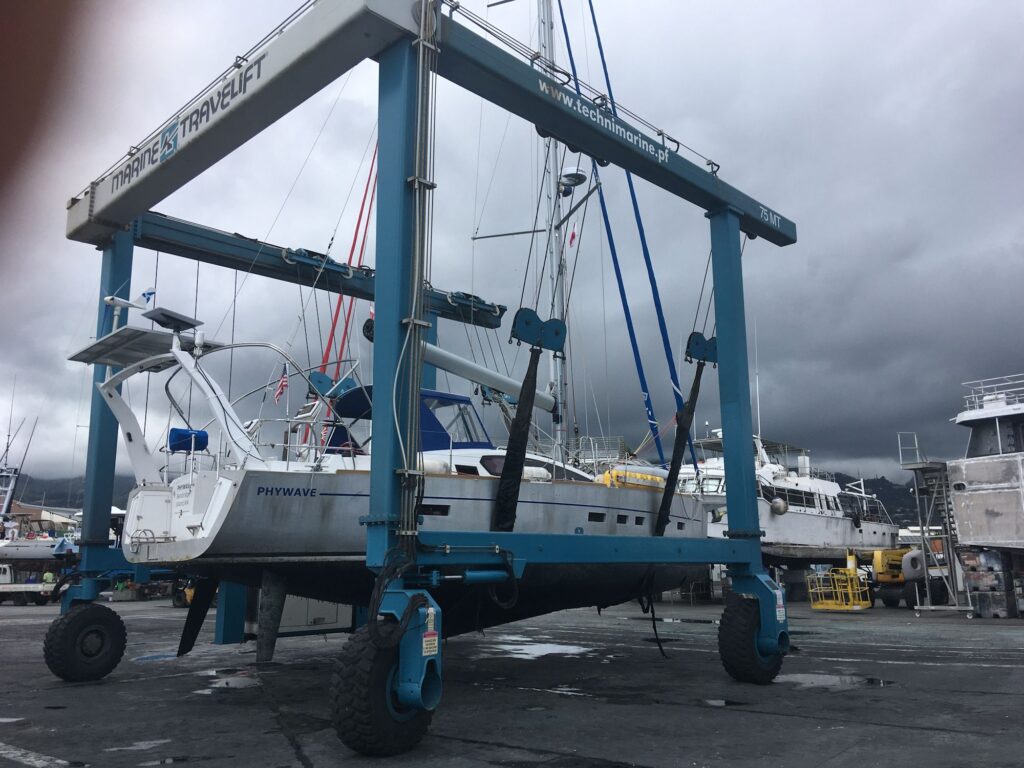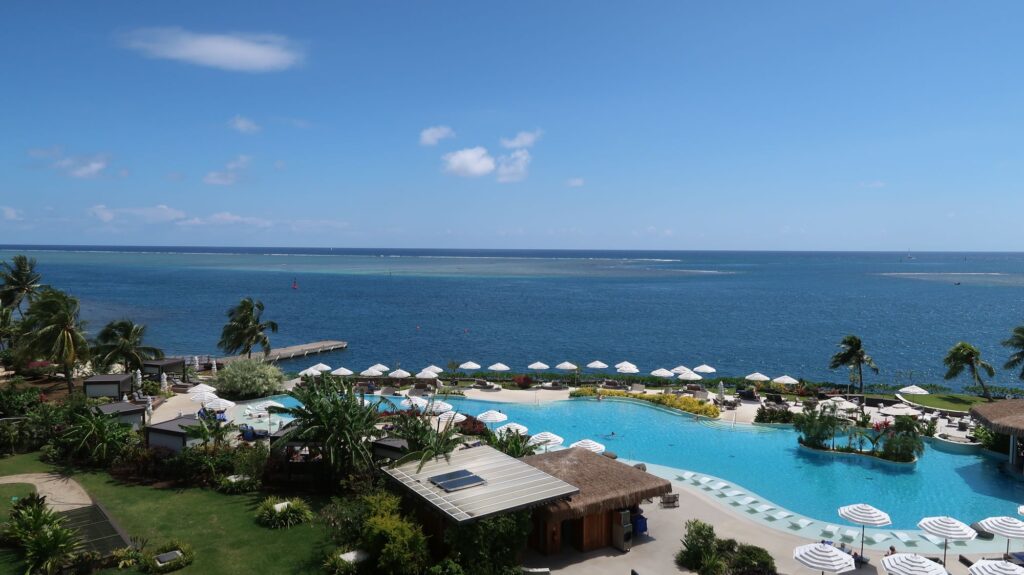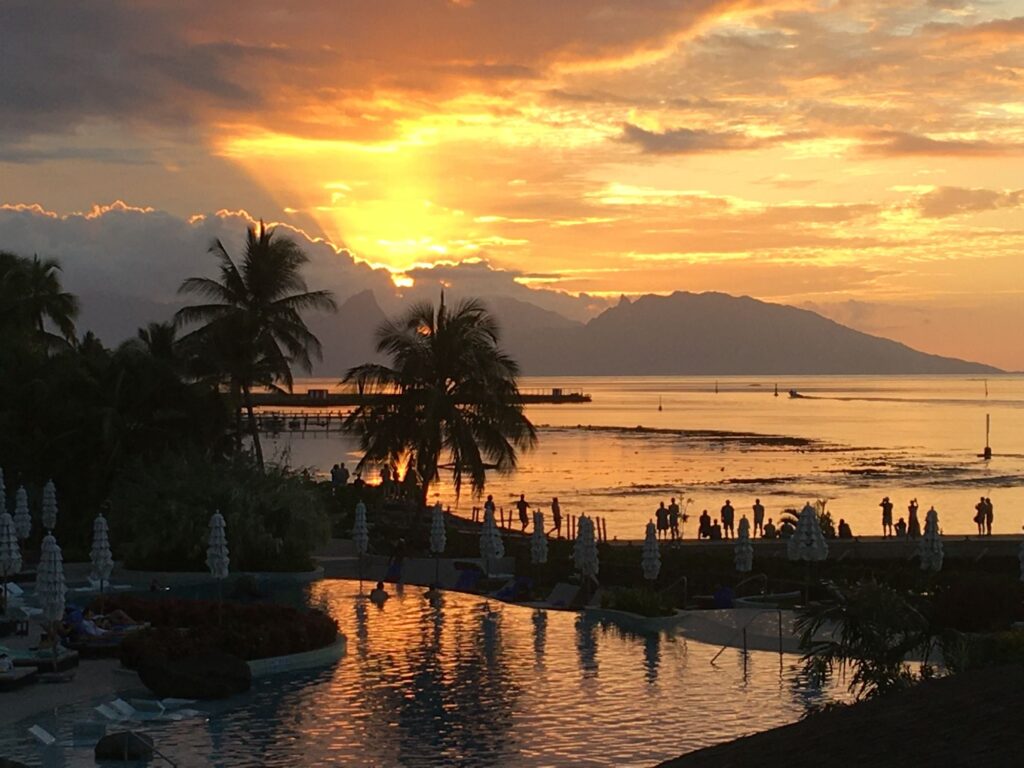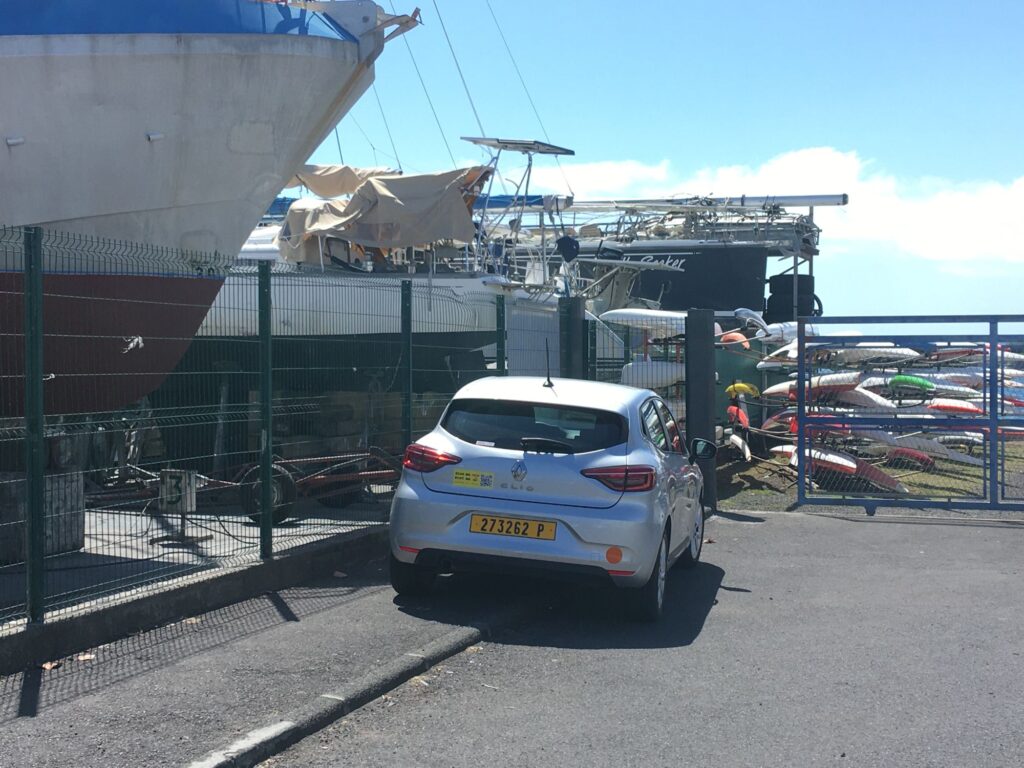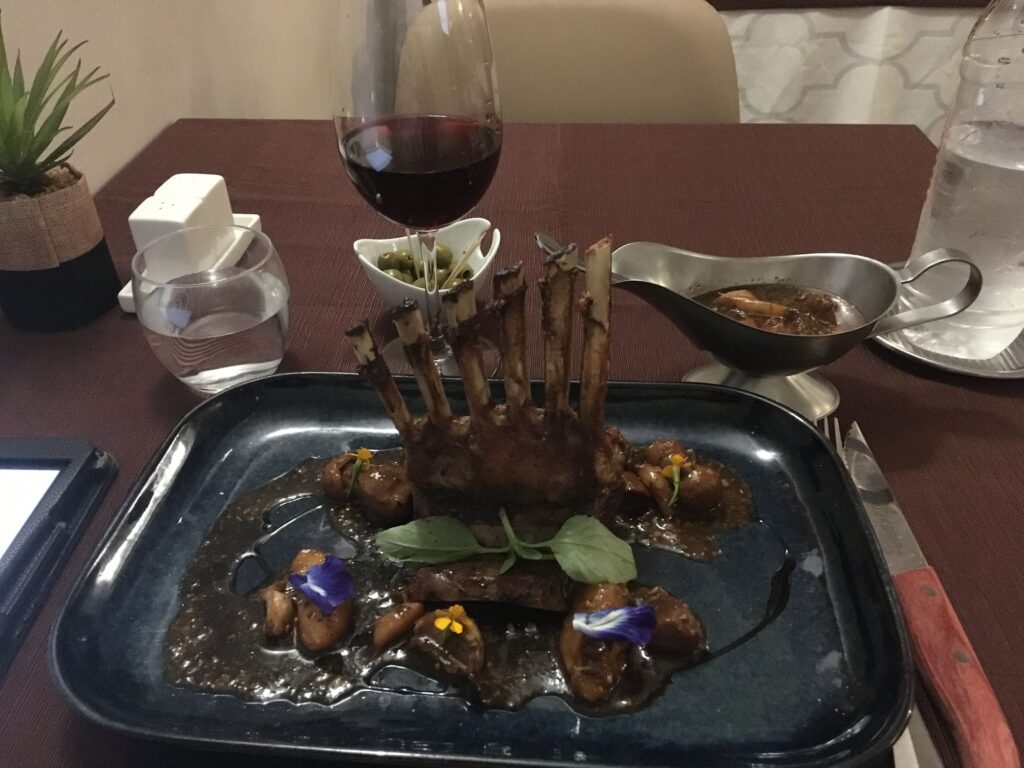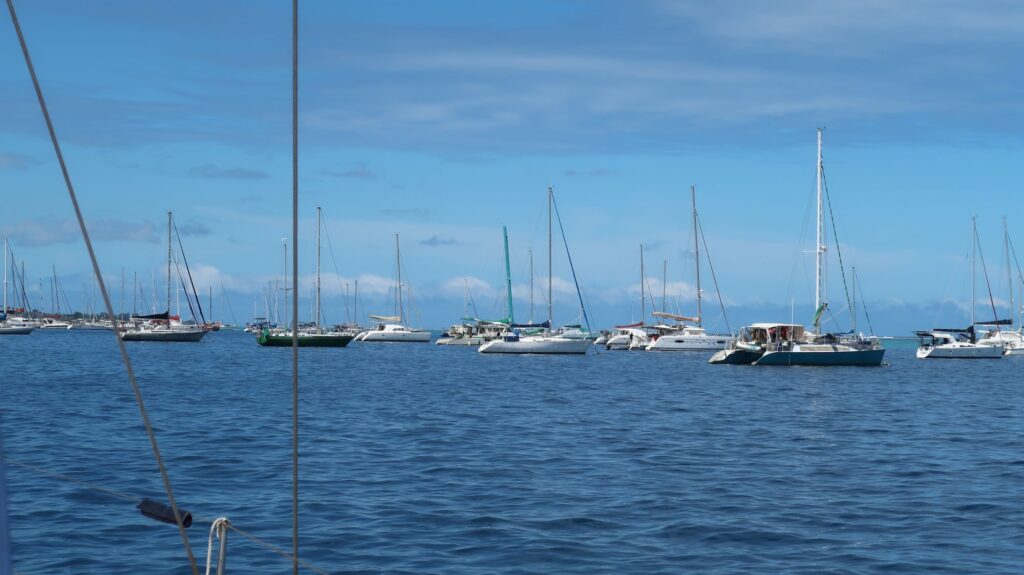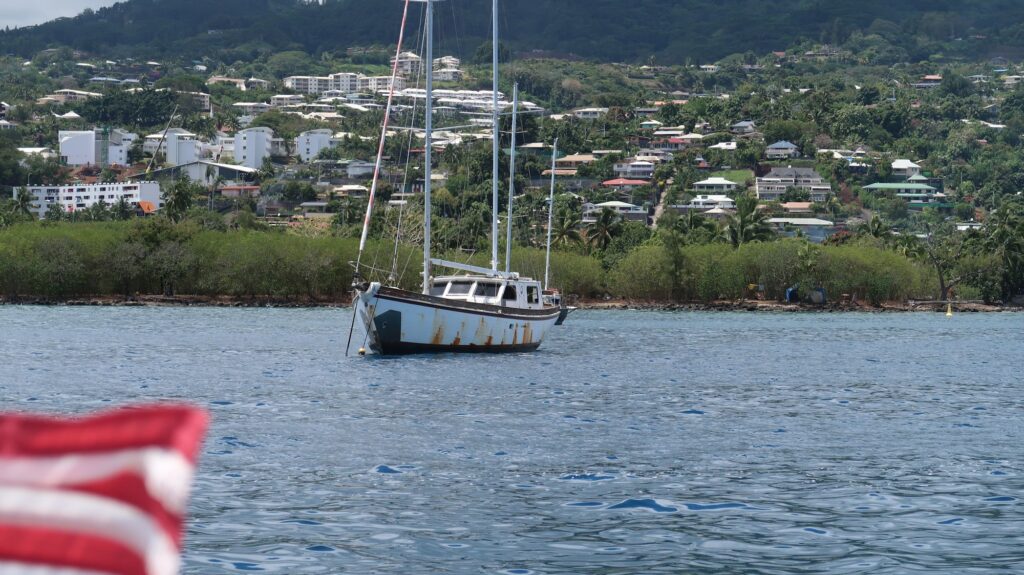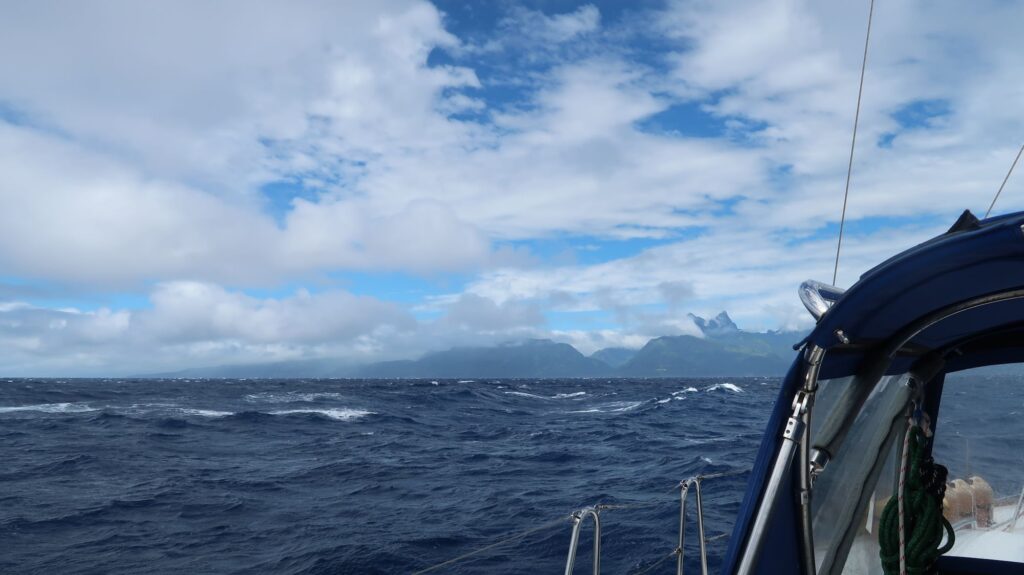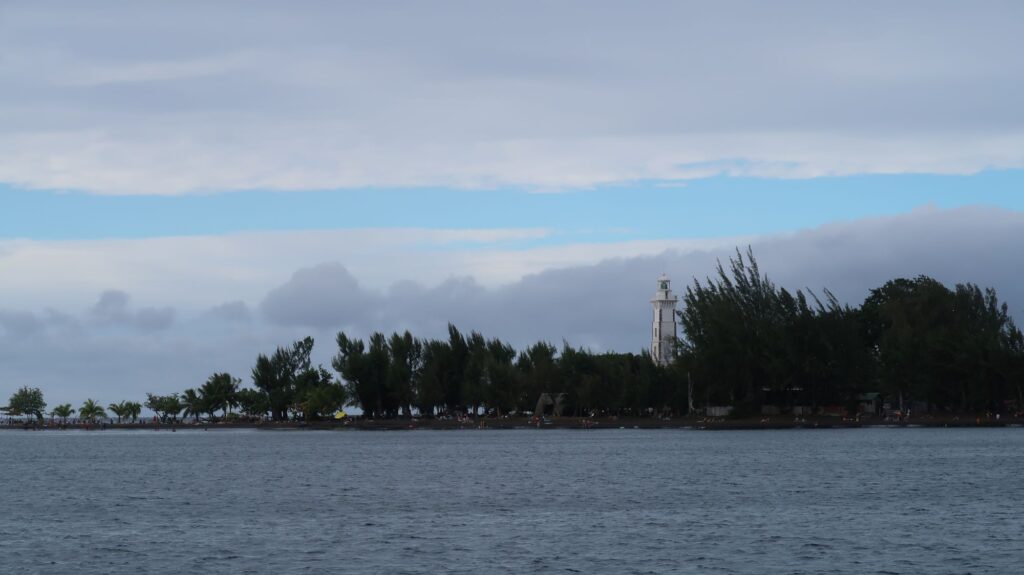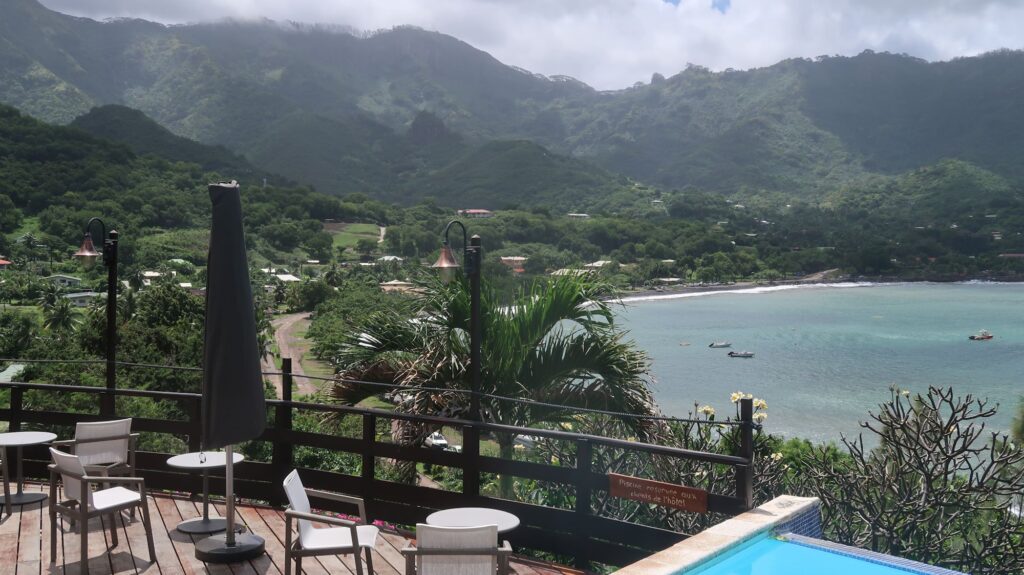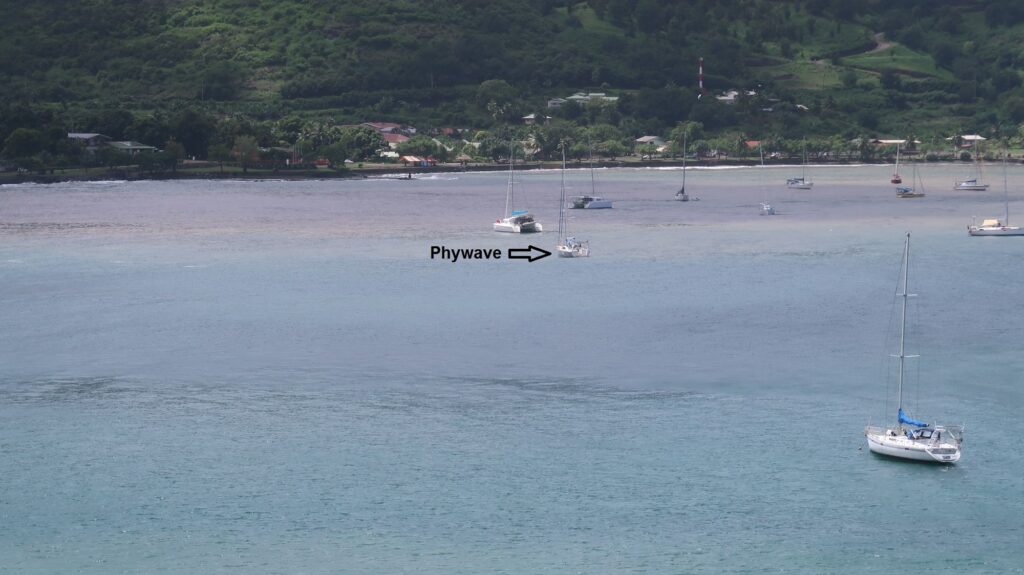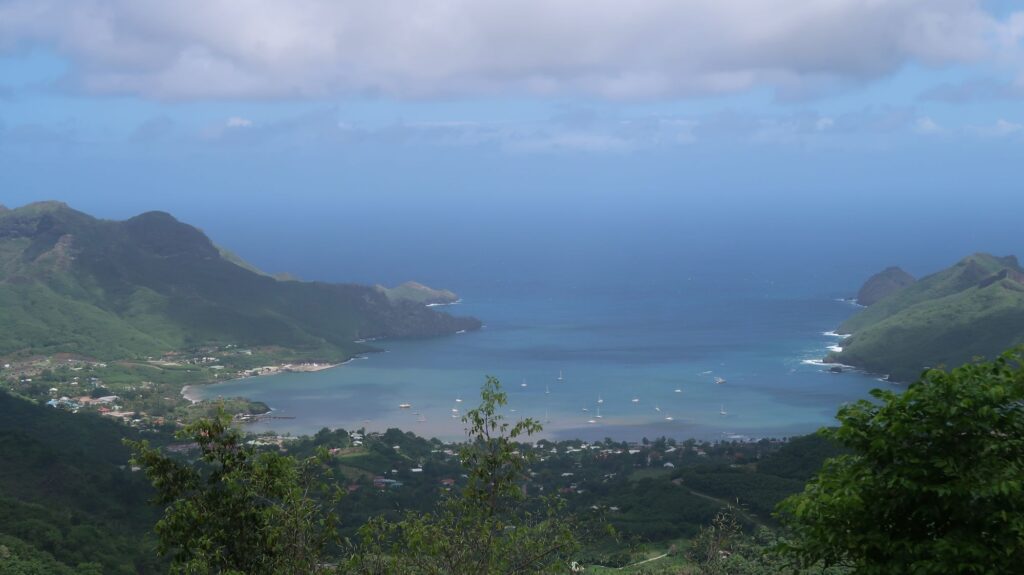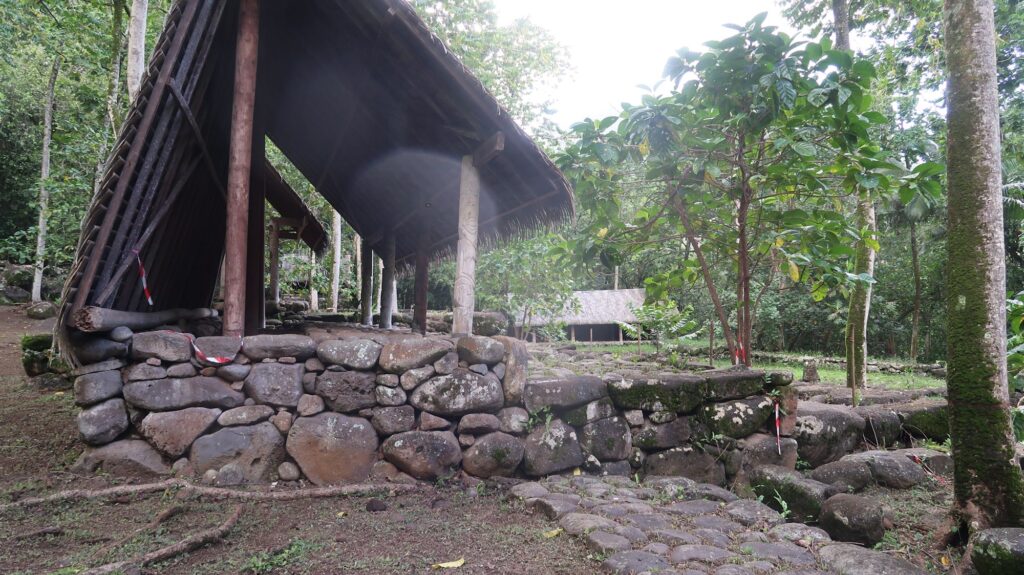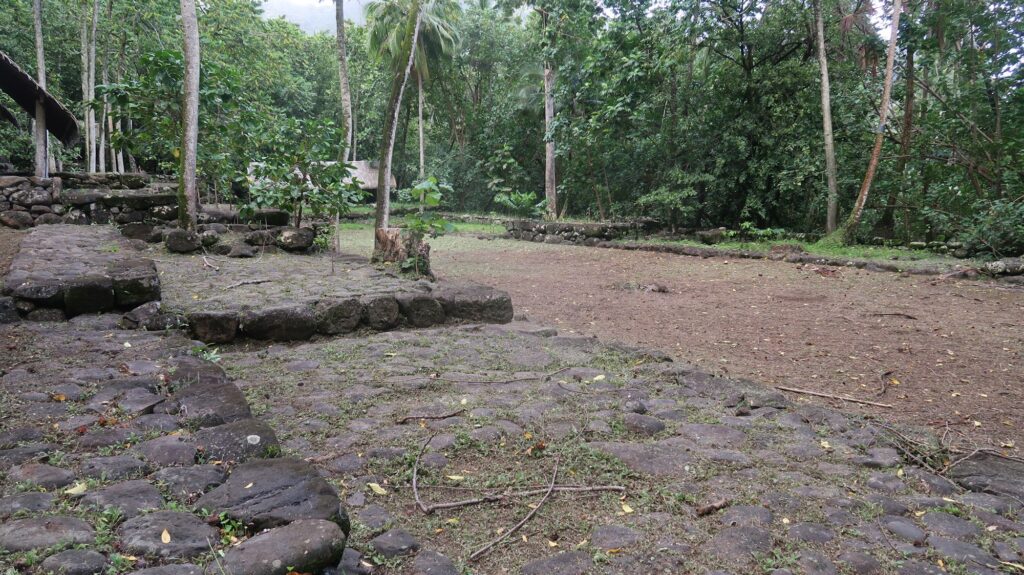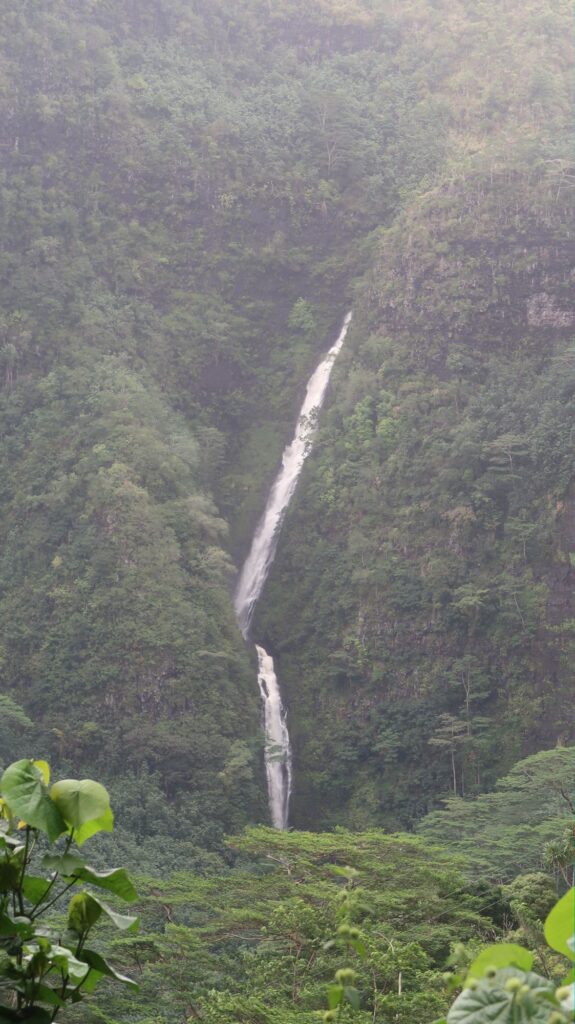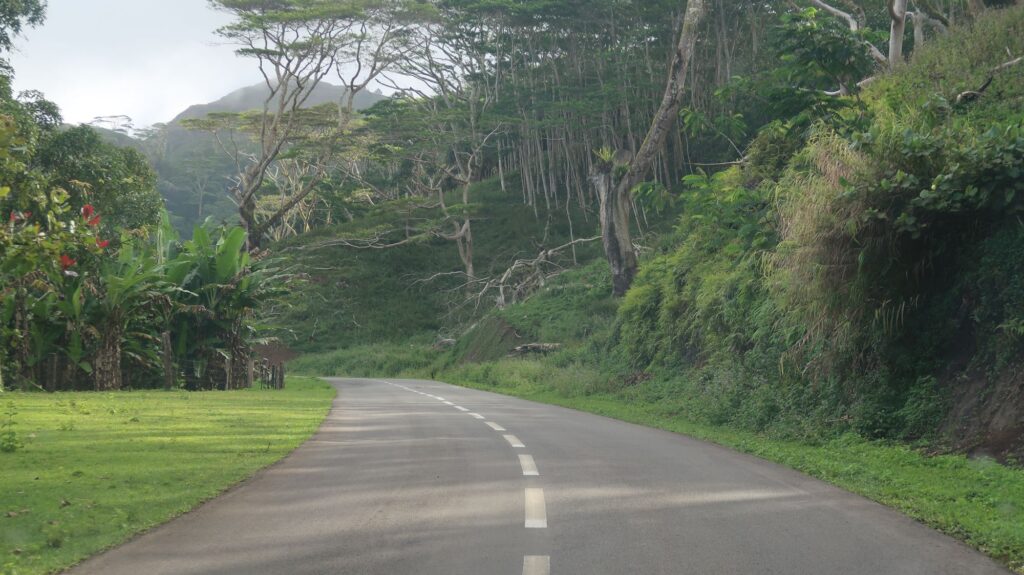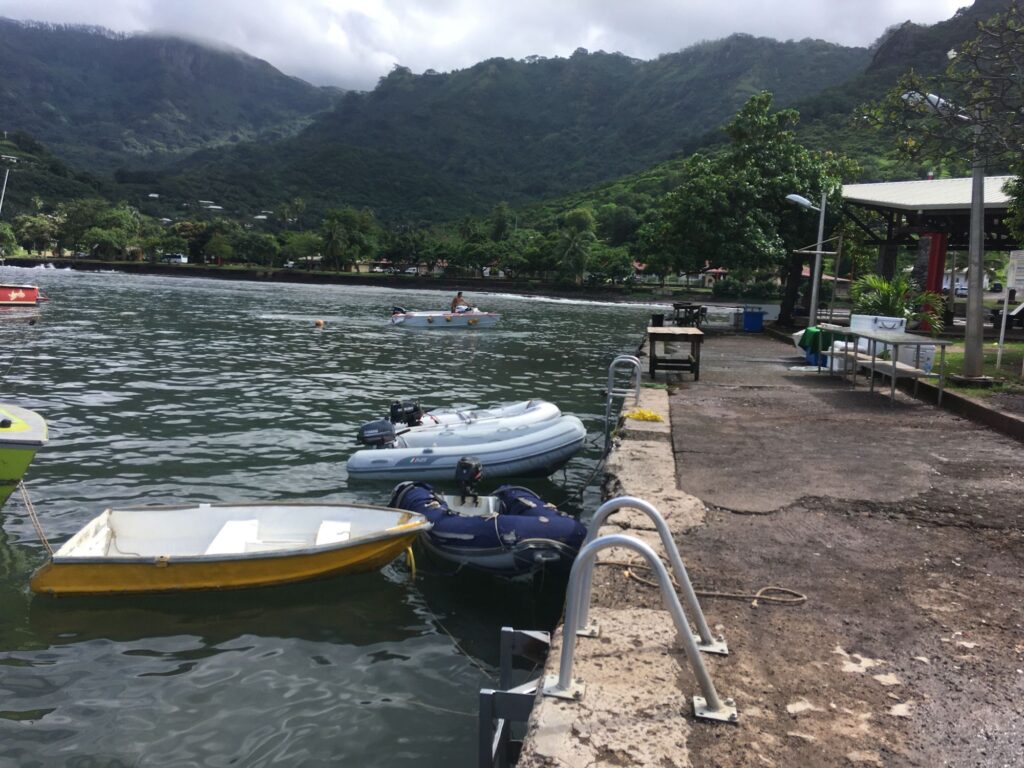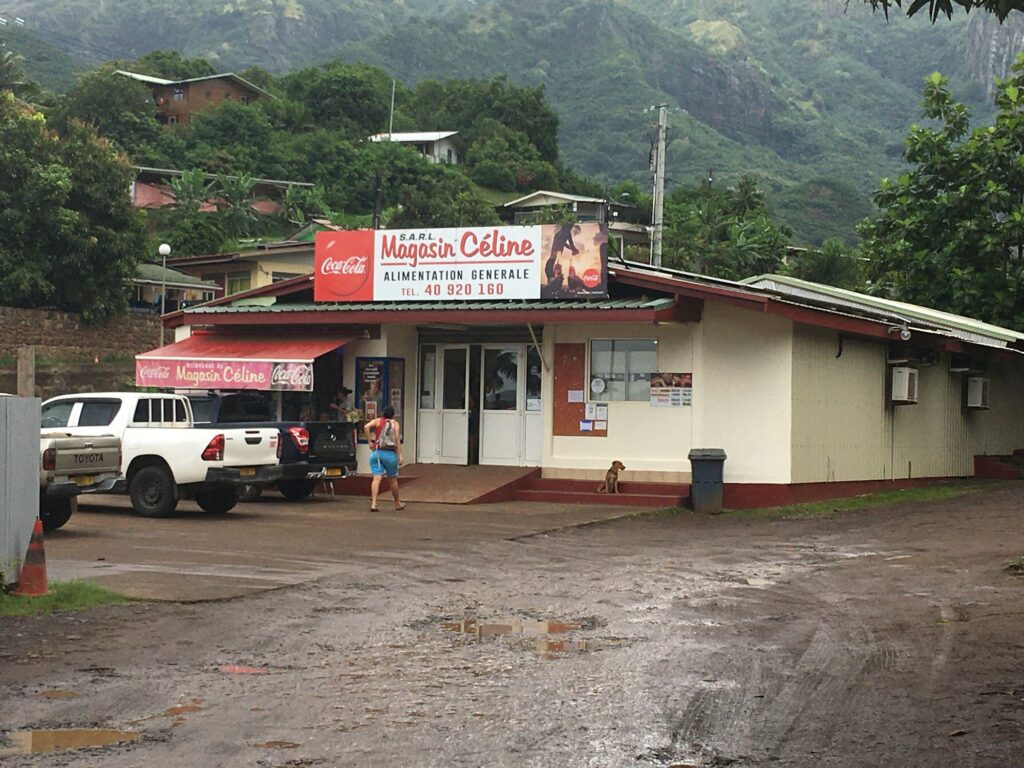It was an active 10 days in Papeete.
With no confirmed marina space available, I decided to have the boat hauled out and put on the hard so I could remove the mainsail for its repairs. This might have been possible with the boat anchored but very difficult. It’s a big sail so I normally have one other person to help me take it off and put it back. Doing it alone with the boat at anchor would have taken 5 times as long to flake the sail once it was off the boom. It also would have been risky – a sudden gust of wind could have pulled the sail off the boat and into the water where recovery would have been nearly impossible. Even if I got it flaked and tied in a bundle I’d have to carry it ashore in the dinghy. Of course, to put it back after repair would have been the same risky process in reverse. Though expensive, with no marina space available hauling the boat was the only viable option. I did take advantage of it by having the bottom power washed. It’s amazing how fast sea life latches onto a hull.
It really is not comfortable to stay on the boat when it’s out of the water – you can’t use any sink drains because normally they discharge straight into the water. Boatyards are also hot, noisy, dusty places with sanding, scraping, and painting going on all day. Hanging out there is no fun.
Given all that, I booked a room at the Hilton Tahiti on the waterfront, a pretty nice place and convenient to where I needed to go in Papeete. It was connected to a shopping mall with a huge Carrefour supermarché where I bought everything I wanted to provision the boat for passage all the way through to Australia. It was also just 10 minutes drive from downtown Papeete with a wide variety of good restaurants. The pool and sunset views from the hotel over nearby Moorea were pleasant distractions from everything happening with the boat, my schedule and my route. The Hilton was the relaxing, restorative interlude I wanted at Nuku-Hiva but didn’t get. A hot shower every day? It’d been months since I had anything close to that luxury.
I rented a car for my time in Papeete. There is no Uber type service in Papeete that I found. The car made it easy to run around to the marine chandlerys and pick up a few things I needed. There is even a big Ace Hardware store near the boatyard where I found, of all things, Coleman gas canisters that fit the Magma grill mounted on my port pushpit. I left the US with 3 cannisters and only had 1/2 of one remaining, never seeing them anywhere else I’ve been, until now. I bought several so I can start grilling again. I also did some touring, driving the coast road around the perimeter of Tahiti Nui and stopping at a quaint beach place for lunch. During the drive I had some spectacular views of the steep, forested interior on the island.
With the sail repaired, repairs I hope will last until at least Australia, I had the boat dropped back in the water and drove it inside and outside the reef south passed the airport to Taina Marina where there is a real fuel dock. I filled the main diesel tank and any empty jerry cans so the boat has more than enough fuel for the run to Australia. In fact, I don’t expect to use much fuel with easterly winds continuing to prevail along my planned route.
So what about my route now? I had to bypass Rangiroa and head straight to Papeete for sail repairs. The next stop would have been Huahine. But with the time burned going to Papeete and days I spent there, any visit to Huahine would have to be a really short one. Making the effort to drop the dinghy in the water, mount the engine, and then reverse the process, for just a day or two ashore doesn’t seem worth it so I dropped the stop in Huahine.
After Huahine I planned on stopping at Suvasuva in Fiji (Vanua Levu Island) where they’ve just completed a great new marina with restaurant , fuel dock, etc. (Nawi Island marina). After the extended stay in Papeete, and taking on full fuel at Taina, taking s break in a marina became less important. It also is a bit out of the way on my direct course to the Torres Strait and ultimately Darwin where I want to leave the boat during the tropical storm season from November to April. Darwin is also most efficiently positioned to sail to an Asia port somewhere for my 6th continent landing, then continue across the Indian Ocean and around the tip of Africa.
So the current plan is to sail to Vava’u in Tonga for a short stop because I’ve never been there (unlike Fiji). It will also give me a chance to reassess crossing the Coral Sea to the Torres Strait at the northern tip of Australia. Vava’u is also a pretty well-protected place where people wait out tropical storm season.
The usual route for transiting the Torres Strait begins at a point just south of Bramble Cay. As might be expected, it is heavily travelled route with lots of big ship traffic and strong currents. It’s far from ideal for a small boat, especially sailing solo where keeping an active watch for ships full time for 40+ hours is not very feasible.
In browsing some cruiser forums about the Torres Strait I read others describing an alternate route, a shortcut that crosses the Great Barrier Reef (GBR) beginning at Raine Island and continues northwest for about 120 nm to Thursday Island where the Torres Strait passage is made. Yes, you’re right if you guessed Thursday Island is between Wednesday Island and Friday Island. The Raine Island passage is described in an obscure book by Ken Hellewell written some 20 years ago. I thought I had no chance of locating a copy so was surprised when I found a kindle version on Amazon. It has specific GPS coordinates and mini-chart extracts for the entire route which necessarily maneuvers through the myriad of coral reefs in the GBR. It even identifies a few anchorages he successfully used when he made the passage, although one is now off limits as a Protected Area in the GBR Marine Reserve. With no ship traffic nor strong currents, and shorter, it seems like the better route to get through to Torres Strait.
So, following Vava’u my destination will be Raine Island about 2500 nm away. That’s now the plan. If the weather reasonably cooperate, and nothing significant on the boat breaks, it should work out. However, if things go slowly I may skip Vava’u and continue straight on to Raine Island.
